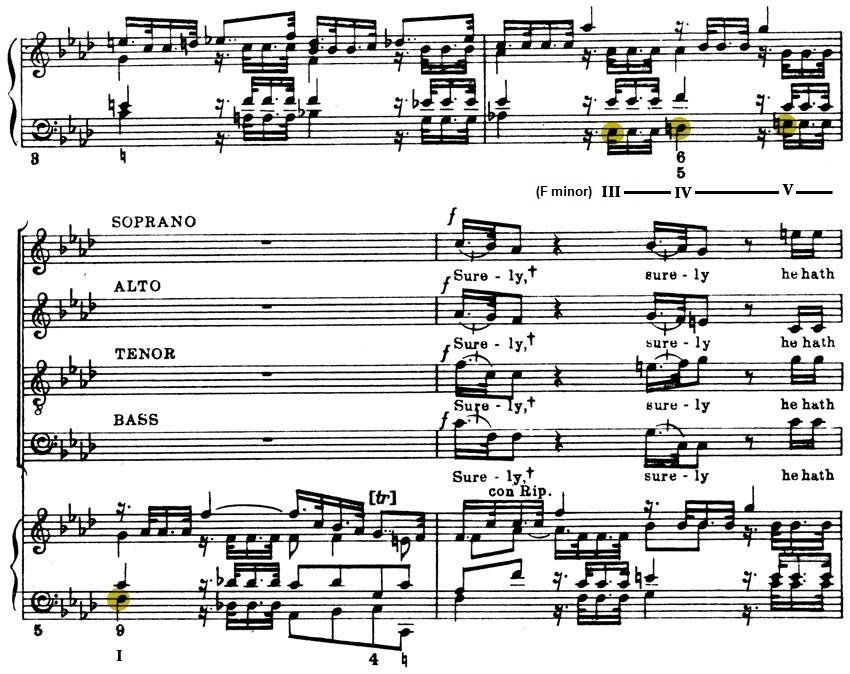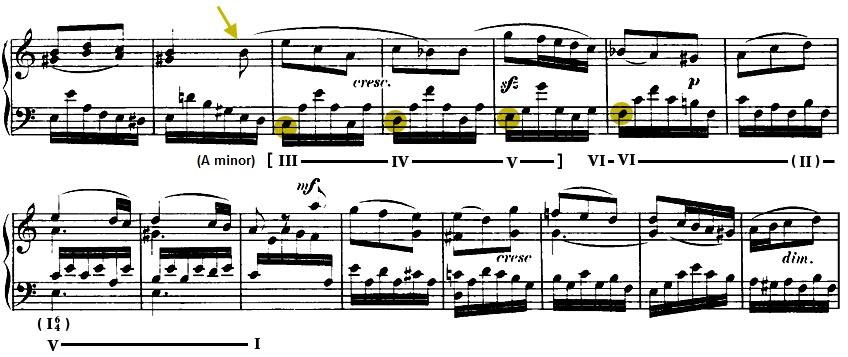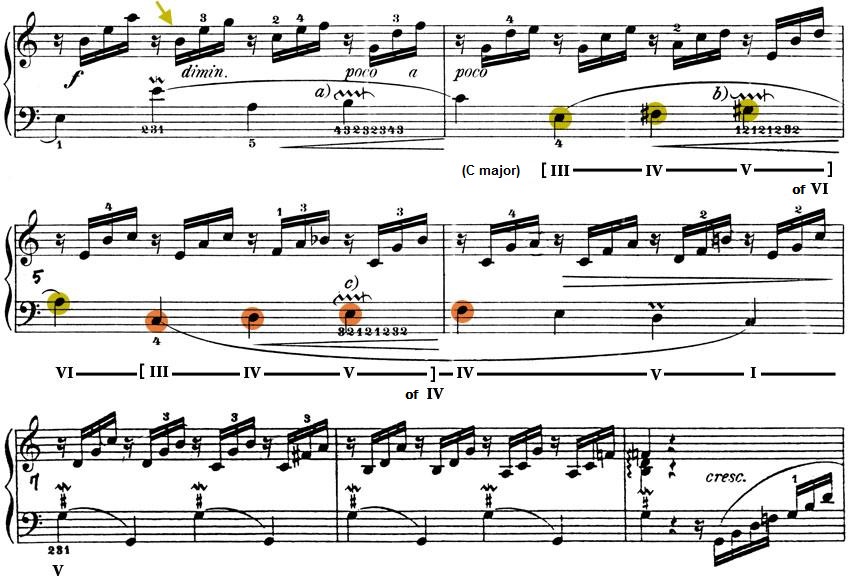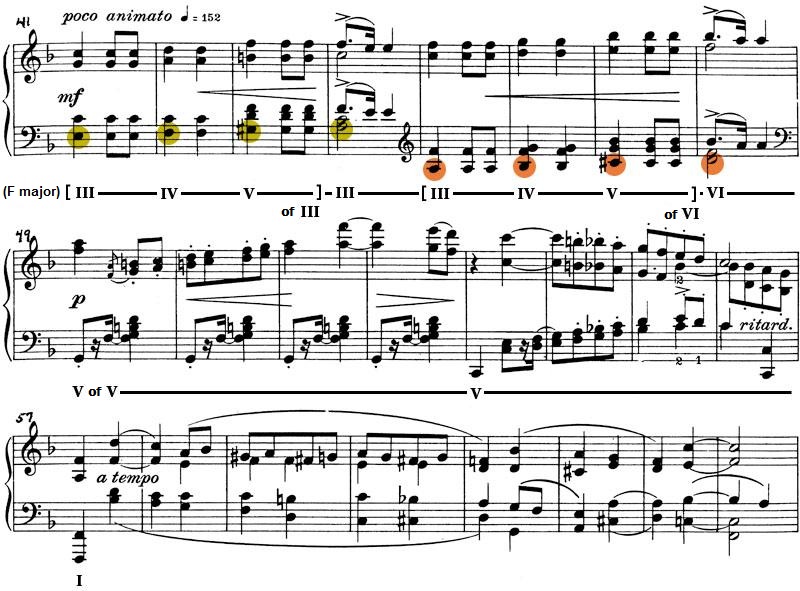1.3 - A practice of analysis in the tonal harmonic discourse from Bach to Wagner ||
A) FORMULAS - 1. Definition of
a formula ::
2. Presentation of
the little catalogue of harmonic vocabulary ::
3. User's guide to
the little catalogue and various instructions ::
4. Examples
illustrating the little catalogue (motifs: 1, 2, 3, 4, 5, 6a, 6b, 7, 8, 9, 10, 11, 12, 13, 14, 15, 16, 17, 18, 19, 20, motifs in combination)
B) SEQUENCES - 1. Definition of a
harmonic sequence :: 2. Classifying
sequences :: 3. Melodic
formulations: characteristic motifs :: 4. The tonal
nature of the harmonic sequence :: 5.The tripartite
structure of the harmonic sequence :: 6. A
modulating sequence or not? :: 7. Diversification
of harmonic content :: 8. The harmonic
sequence as a place of subversion :: 9. Conclusion
4. EXAMPLES ILLUSTRATING THE LITTLE CATALOGUE
Motif no 8

|
Example 197 : G.F. Handel : Messiah, no 23, "Surely, He Hath Borne Our Griefs" (mm 3-5)

Example 198 : J.S. Bach : Cantata BWV 60, "O Ewigkeit, du Donnerwort", final choral

Example 199 : G.F. Handel : Messiah, no 24, "Surely, He Hath Borne Our Griefs" (mm 3-4)

Example 200 : F. Mendelssohn : Songs Without Words, op. 19, no 2 (mm 48-56)

Example 201 : J.S. Bach : Little Preludes, BWV 924, I (mm 3-7)

Example 202 : R. Schumann : Novelette, op. 21, no 6, Allegro Scherzando (mm 41-57)

Example 203 : F. Schubert : String quartet no 14, D. 810, Death and the Maiden, I, Allegro (mm 89-97)

Example 204 : W.A. Mozart : Fantasy, K. 475 (mm 128-131)

motif no 9 
|
